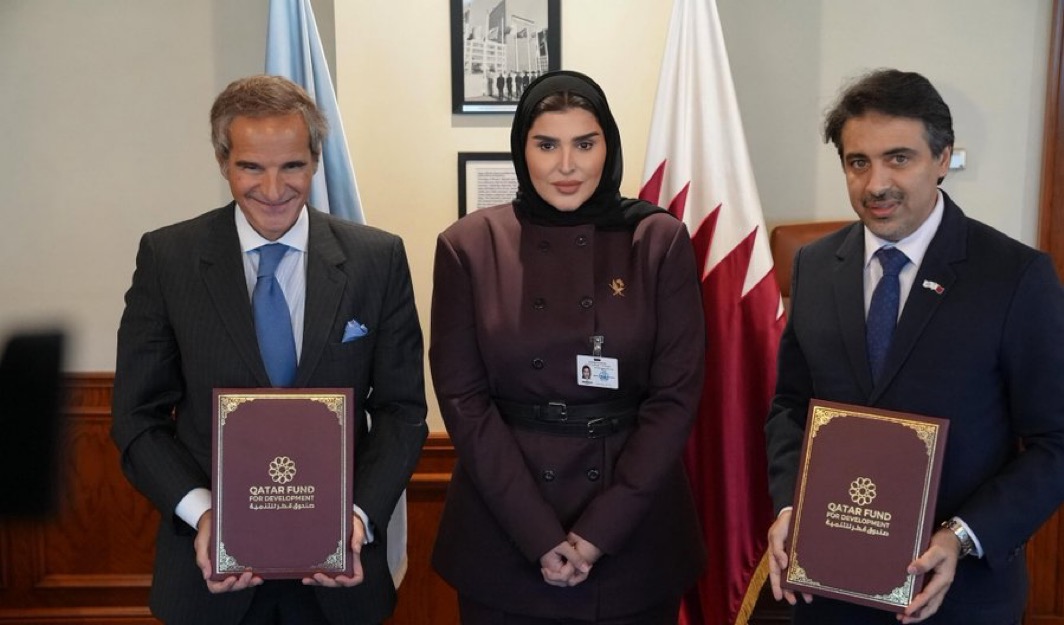IAEA Signs Agreement with Qatar to Expand Cancer Care in the Middle East
The International Atomic Energy Agency (IAEA) signed a $600 000 partnership on Wednesday with the Qatar Fund for Development (QFFD) to support technical cooperation projects, including to strengthen radiation medicine services in Syria.
The agreement, signed by Mr Fahad Hamad Al-Sulaiti, Director General of QFFD and IAEA Director General Rafael Mariano Grossi, and in the presence of Her Excellency Dr Maryam bin Ali bin Nasser Al-Misnad, Minister of State for International Cooperation and Vice-Chairperson of the Board of Directors of QFFD, on the sidelines of the United Nations General Assembly, will contribute towards advanced nuclear medicine diagnostic imaging services at the Al-Biruni Hospital in Damascus. The support is expected to benefit more than 3000 patients every year.
“At Qatar Fund for Development, we deeply value the IAEA’s efforts to advance the peaceful applications of nuclear technology,” Mr Al-Sulaiti said. “The introduction of nuclear medicine capacity in a public hospital in Damascus represents more than a medical achievement — it embodies our mission to strengthen health systems as a foundation for restoring well-being and dignity. By investing in advanced diagnostic tools, we aim to support the Syrian people in their journey toward recovery, resilience and a healthier future.”
“We thank Qatar for this generous contribution to improve cancer care in the region,” said the IAEA Director General during the signing ceremony. “Early diagnosis saves lives, and we welcome this donation from Qatar to support the establishment of comprehensive cancer services in Syria.”
Over a decade of armed conflict have devastated Syria’s medical infrastructure, taking a heavy toll on services to tackle long-term diseases like cancer. Cancer incidence has continued to rise in the country, however, with limited services available to tackle the growing burden.
Breast cancer, for example, is the most common cancer among women in Syria, making up around one-third of cases and a mortality rate of 20%. Nuclear and radiation-based techniques, such as PET-CT, are key in the early detection and treatment of tumours, greatly increasing the chances of patient survival.
Earlier this year, IAEA Director General Grossi visited Syria and met President Al-Sharaa, where, among others, he discussed a comprehensive programme to support the country with medical equipment and training under Rays of Hope. This IAEA initiative seeks to bridge gaps in access to nuclear and radiation medicine worldwide.
“Prior to the conflict, we had made notable progress in cancer care, but services have been severely impacted, forcing many Syrians to seek treatment abroad,” said Dr Mudar Al-Okla, Director General of the Syrian Atomic Energy Commission. “As our country works to rebuild national healthcare, revitalizing radiation medicine services is a priority.”
This is the first agreement signed between the IAEA and QFFD – a government entity responsible for the State of Qatar’s international development and foreign aid.
Since 2022, the IAEA Rays of Hope initiative has been supporting low- and middle-income countries in strengthening cancer services. To date, over 90 countries have requested support and more than €90 million have been mobilized by donors and partners of the initiative.
